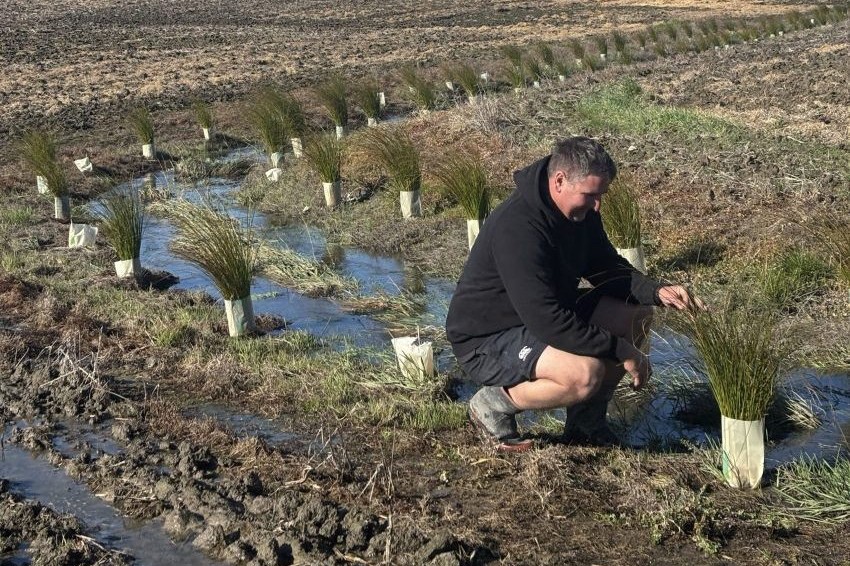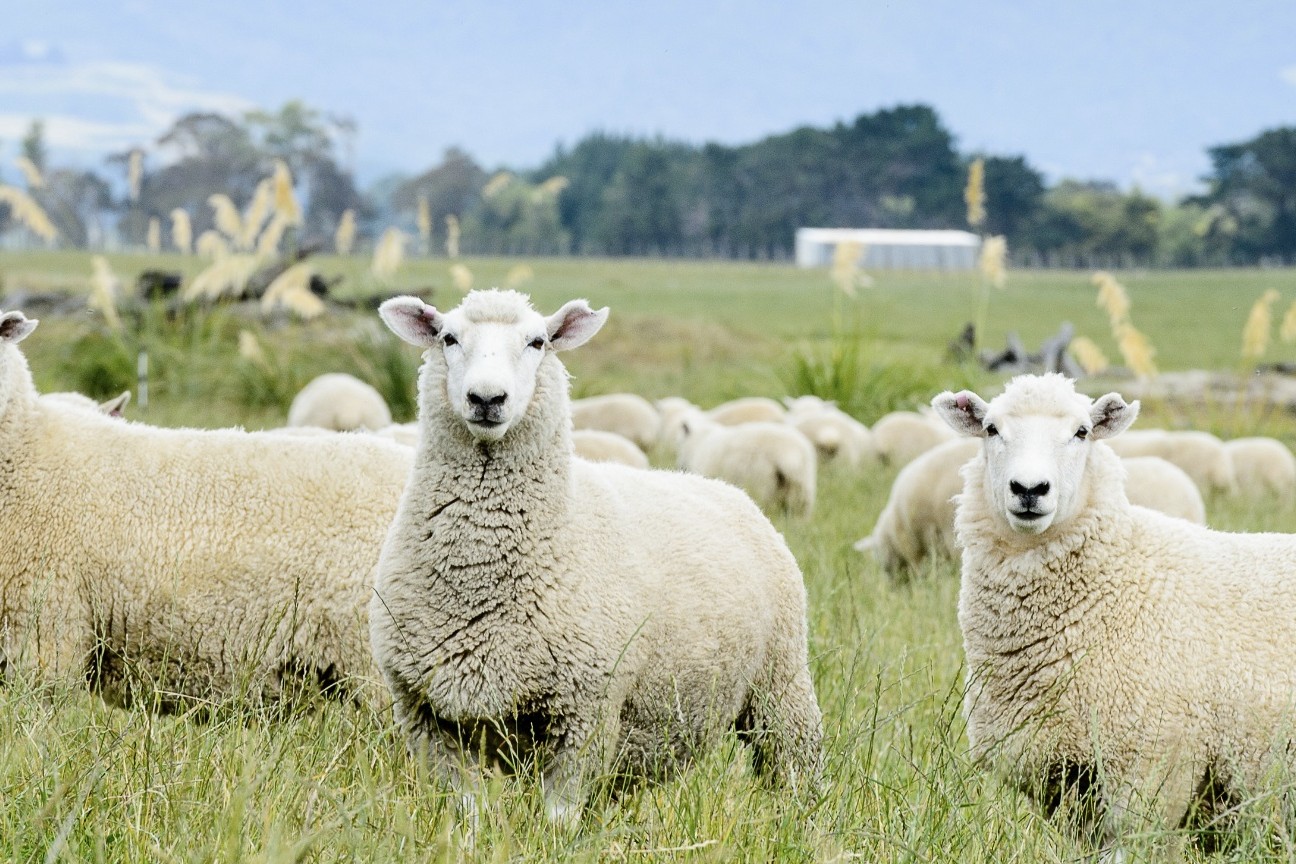Farming for the future
With an eye to the future, North Canterbury farmers Jock and Pip Foster see NZ Farm Assurance Programme (NZFAP) Plus accreditation as an opportunity to access markets and generate a premium for what they produce. Words SandRa Taylor, Photos Kelly Shakespeare.
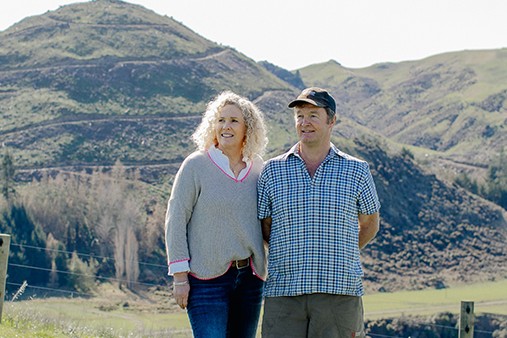
 A North Canterbury sheep and beef couple have worked together as a team to evolve their business over the years in response to climate, economics, market demands and regulatory changes constantly working to ensure their business is well-posed to take advantage of any future opportunities.
A North Canterbury sheep and beef couple have worked together as a team to evolve their business over the years in response to climate, economics, market demands and regulatory changes constantly working to ensure their business is well-posed to take advantage of any future opportunities.
Jock and Pip Foster were winners of the 2023 Silver Fern Farms Plate to Pasture Supplier Award in recognition of their ability to supply in-spec stock from a farming system that protects and enhances their farm environment as well as demonstrating an understanding of global consumer needs.
The judges highlighted “their mission statement of running a farming system that takes into consideration the biodiversity, protecting and enhancing the environment, a low emission system and livestock raised as nature intended.”
Jock’s farm and people management skills combined with Pip’s interest in compliance that when combined enhance their business at both a practical and market level has enabled them to achieve New Zealand Farm Assurance Plus Gold accreditation.
Flexibility key in dry hill country
The Fosters typically lamb 4,500 mixed-age Longdown composite ewes, 1,000 hoggets alongside trading and grazing cattle. The Longdown genetics are sourced from Chris and Jane Earl who farm just down the road in the Scargill Valley, so the sheep are proven performers in North Canterbury’s summer dry environment. With a focus on survivability, Jock and Pip target a 150% lambing with a range of 140-155 percent. “We’d like to scan 185% to achieve this goal and then focus on improving survivability. Scanning is back 15% this year due to the drought which is going to impact on this season’s lamb numbers,” says Jock.
Rams go out mid-March for lambing from 10 August. The two-tooths and hoggets lamb in September. The ewes lamb on the easier hill country and downs and the lambs are weaned from late November. Typically, they will sell 40-50% of the black-face terminal sire lambs prime at weaning, but they have a flexible policy with lamb finishing depending on both the weather and the market. In dry summers they will draft to lighter weights or occasionally sell store lambs if irrigation restrictions are prolonged, but usually the bulk of their lambs are finished on irrigated crops and pastures. Aware of the threat posed by triple drench resistance, the couple have taken pre-emptive measures to retain the efficacy of their drenches and reduce their reliance on drenches for worm control. Jock says the threat of drench resistance is the reason they buy-in trading cattle rather than trading lambs on the irrigated country and they carry out Faecal Egg Reduction Tests every year to ensure the drenches they are using are effective. They also carry our regular Faecal Egg Counts throughout summer to monitor worm burdens. “It’s just about being aware of where we are at. There is some really good information out there about the risks and opportunities, particularly from Wormwise manager Ginny Dodunski,” says Jock.

2 The Fosters love growing young farmers. 3 Trading and finishing cattle gives them a buffer for climate, markets and parasite management.
4 Water from the Hurunui River enables the Fosters to guarantee summer brassicas.
From both a financial and parasite management point of view, Jock says they will be looking at increasing their cattle numbers in the future. At the moment they run a 60:40 sheep to cattle ratio, but currently sheep are both the biggest cost and the poorest performers in their business.
They buy in 15-18-month-old trading cattle for finishing and have finished over 1000 trading cattle in the past, but cattle margins have been squeezed over the past season.
This year they will finish 500 cattle and are grazing 350 Friesian dairy heifers, 150 carry-over cows and 150 Wagyu cattle.
This change in cattle policies has been driven by the need for cashflow as well as reduced margins in cattle trading. Jock says there is a lot of capital tied up in trading cattle and a shift to grazing stock has reduced the impact of this in a high-interest rate environment.
Landcare Group a game-changer
Several years ago, the Fosters had their farm mapped into Land Capability Units and this has helped inform their land management decisions.
The irrigation, which they have had for 10 years, has been a game-changer for their business and they fiercely protect their water consent by ensuring they meet all compliance requirements and manage their water resources responsibly.
“Irrigation has taken us from being forced sellers of our stock, to being in control of our selling decisions. Before the irrigation, our selling decisions were often based on how much rain we had-had in December.”
Unusually for a sheep and beef farm, the irrigation is all fixed-grid solid set irrigation more commonly associated with horticultural use or vineyards. Jock says they chose the fixed-grid because of the narrow and awkward shape of the area they had ear-marked for irrigating.
It allows them to irrigate 100% of the consented area and the irrigators are very low maintenance and easy to repair. Water is drawn from the Hurunui River and this water enables the Fosters to guarantee summer brassicas, which are used for finishing their lambs to a target of 18kgCW, and grass for their trading cattle. After a particularly dry summer and autumn this year, the irrigation grew feed that was used for pre-lamb feed for some ewes.
This allowed them to start building pasture covers on the rest of the farm. The couple are a part of the Hurunui District Landcare Group (HDLG) initially set up as an advocacy group for Hurunui’s dryland farmers rallying against a flawed environmental regulation. The group has now transformed into a catchment collective with a focus on helping the region’s farmers and communities understand evolving regulatory requirements and protect and enhance their natural resources.
‘The irrigation has helped us realise the genetic potential of our stock and has allowed us to diversify into other income streams.’ – Jock Foster
Ministry for Primary Industries funding allowed HDLG to offer members one-on-one support from Catchment Farm Advisors as well as help from experts such as Phil Orme, a forestry consultant and ecologist James Lambie. They created a planting plan with Phil and ensured they were eligible for inclusion in the ETS and James mapped all the waterways on their property.
They have subsequently fenced-off pockets of unproductive and erosion-prone land and planted them in pine trees with some poplar pole planting. The pine trees have been entered into the Emissions Trading Scheme, adding another income stream to their business and generating a return on unproductive parts of the farm but only reducing stock units by 5%.
‘’The trees have got a place in our system; they have strengthened our business. And the funding and support from HDLG has been instrumental in us achieving New Zealand Farm Assurance Programme (NZFAP) Plus Gold accreditation,” says Jock. Pip says before they embarked on NZFAP Plus accreditation they had already developed Farm Plans, initially with Beef + Lamb New Zealand. These were further developed with the help of John Holmes, their HDLG Catchment Farm Advisor.
“We’ve taken every opportunity to use the services made available through HDLG, you’d be crazy not to. Compliance is a minefield, but with advisors they help you break it down into bite-size pieces. We are incredibly grateful to HDLG,” says Pip. Pip enjoys working on the compliance side of the business and has also developed a business managing health and safety for four fixed-wing agricultural companies.
Embracing technology and growing young farmers
Technology does play an important part in compliance and the couple made a deliberate decision to adopt farm management software that all their staff could use. They use Farm IQ, Loncel, an irrigation management system and their agronomist uses AgWorld which gives them a history of inputs and crops and forages grown on every paddock of the farm. This software is invaluable when it comes to audits and Pip says they simply give the auditors the passwords and all the information they need is there at their fingertips.
Jock jokes that only five years ago, all the farm management information was kept in his notebook. Now all feed plans, animal health records, ASD forms, farm safety meeting minutes and all other farm management information is logged into FarmIQ so is available for everyone to see. Employee George Satterthwaite, who the couple describe as their 2IC and is responsible for a lot of the day-to-day stock management, is charged with uploading all the farm management information into FarmIQ as part of his job description. They see it as a skill George will need in any future manager’s role and it is part of his career development.
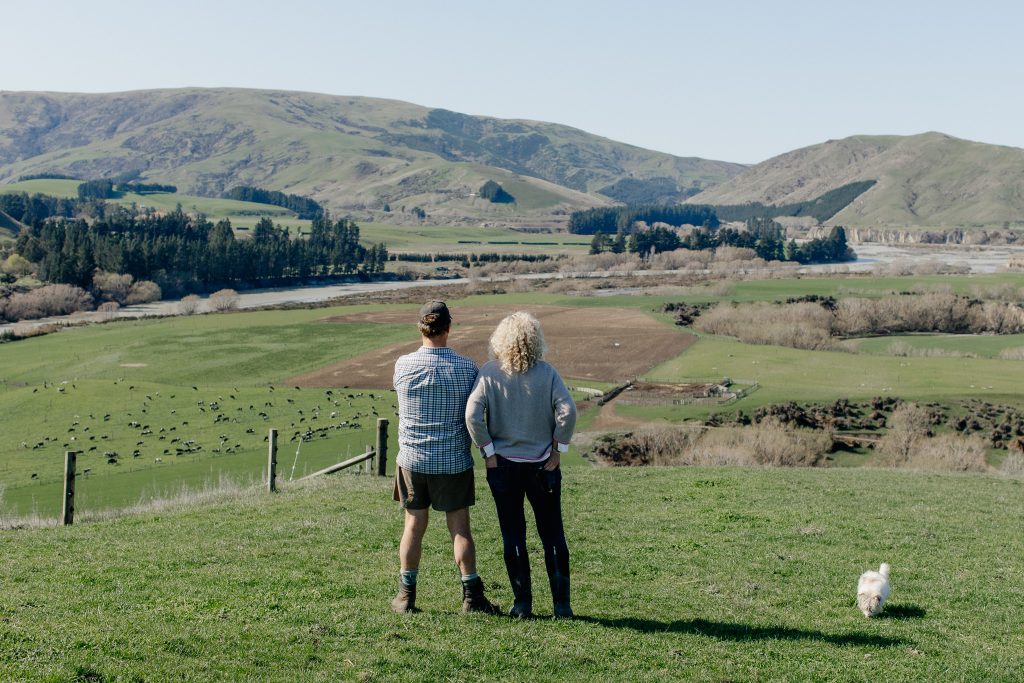
George, who is a builder by trade, has been employed at Raumati for three years and is a much-valued member of the farm. Jock and Pip have encouraged him to complete Primary ITO training courses and have real interest in his career development. They couple also employ a Growing Future Farmers student which gives students the opportunity to grow both their practical and theoretical skills while on the job.
‘NZFAP Plus is about future-proofing our business while keeping up with the best farm management practices. If this becomes a mandatory requirement then we are well positioned to take advantage of it early.’ – Pip Foster
“It’s a well-run and well-structured programme. The industry has its challenges attracting people so it is important for industry to have that pathway, especially for young people
who haven’t got a farming background,” says Jock.
China from a farmers perspective
Jock and Pip Foster were surprised to learn that China was largely self-sufficient in sheep meat, with a national flock of over 170 million sheep on their recent Silver Fern Farms supplier trip.
Following a Silver Fern Farms supplier trip to visit markets in China and South Korea, Pip and Jock Foster both have a greater awareness of the challenges and opportunities in those countries, in particular the competitive nature of the protein market. “China was nothing like what they were expecting; it was greener and cleaner with excellent infrastructure, despite the rapid growth of cities that 20 years ago were non-existent,” says Jock.
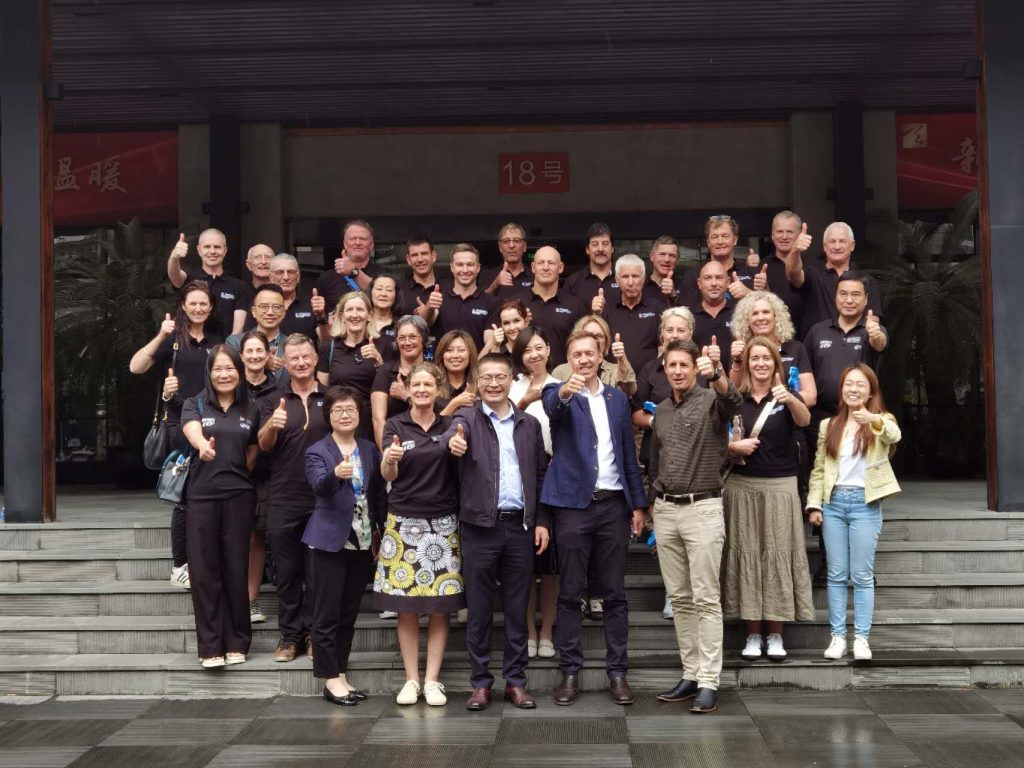
Despite China’s rapid urbanisation, the couple found that the Chinese still ate in a very traditional way, with a prevalence of hotpots using thinly sliced meat and offal. In the protein market there was a lot of competition, particularly from pork. In the retail outlets they visited, pork was priced at a significant discount to red meats. Along with the 26 other people on the trip, the couple attended a World Food Show and were blown away by both the size of the show and the competition in the red meat space from South American countries and Australia. Argentina in particular, had a real presence at the show with different processors all promoting their beef.
From their observations, both Jock and Pip felt there were still good opportunities for New Zealand sheep meat in targeted parts of the market, both at the high end as well as for value type cuts and offal in the lower tiered cities.
While South Korea was more westernised, there was a clear preference for grain-fed beef and they believed a shift in mindset would be required to change that. It was also a very competitive market.
While price appeared to trump pasture-raised as a marketing attribute, this hasn’t diminished the couple’s determination to stay at the top of their game and be posed to capitalise on markets that were prepared to a pay a premium for red meat produced with the high animal welfare, environmental and social standards they maintain in their farming business.

